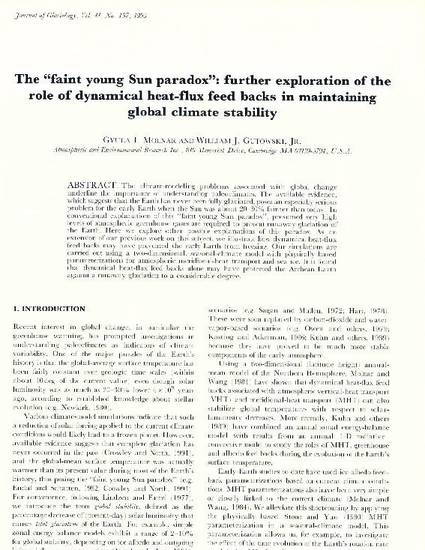
Article
No The “faint young Sun paradox”: further exploration of the role of dynamical heat-flux feed backs in maintaining global climate stability
Journal of Glaciology
(1995)
Abstract
The climate-modeling problems associated with global change underline the importance of understanding paleoclimates. The available evidence, which suggests that the Earth has never been fully glaciated, poses an especially serious problem for the early Earth when the Sun was about 20–30% fainter than today. In conventional explanations of this “faint young Sun paradox”, presumed very high levels of atmospheric greenhouse gases are required to prevent runaway glaciation of the Earth. Here we explore other possible explanations of this paradox. As an extension of our previous work on this subject, we illustrate how-dynamical beat-flux feed backs may have prevented the early Earth from freezing. Our simulations are carried out using a two-dimensional, seasonal-climate model with physically based parameterizations for atmospheric meridional-heat transport and sea ice. It ís found that dynamical heat-flux feed backs alone may have protected the Archean Earth against a runaway glaciation to a considerable degree.
Disciplines
Publication Date
1995
DOI
10.3189/S0022143000017780
Publisher Statement
Copyright: © International Glaciological Society 1995
Citation Information
William J. Gutowski and Gyula I. Molnar. "No The “faint young Sun paradox”: further exploration of the role of dynamical heat-flux feed backs in maintaining global climate stability" Journal of Glaciology Vol. 41 Iss. 137 (1995) p. 87 - 90 Available at: http://works.bepress.com/william-gutowski/92/
Creative Commons license

This work is licensed under a Creative Commons CC_BY International License.
